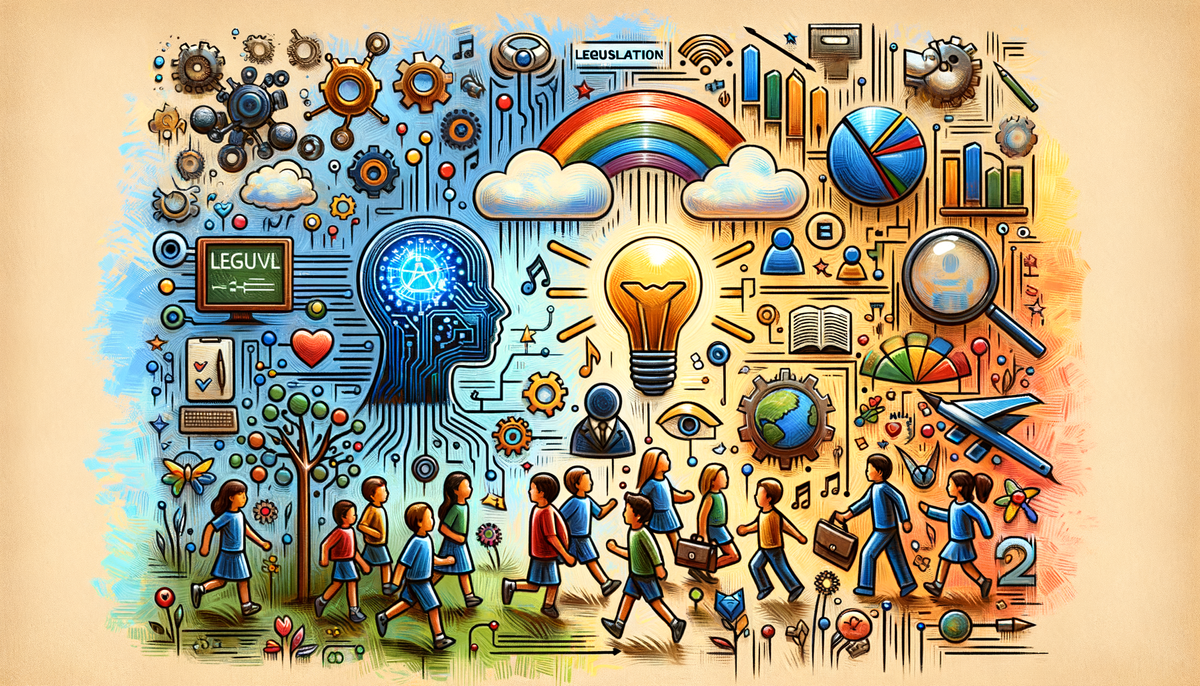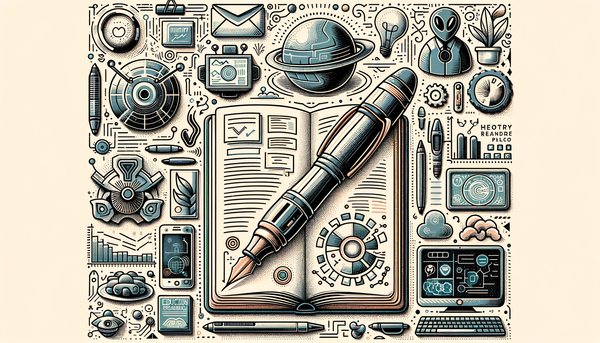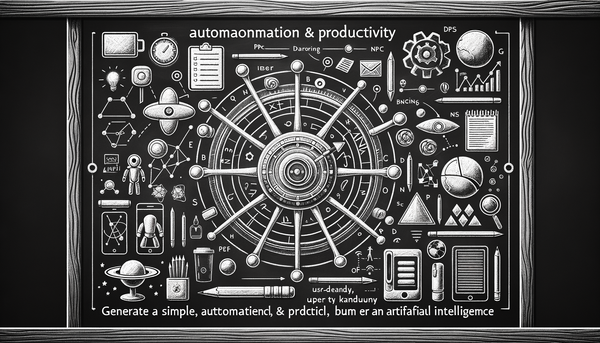Digital Labor, AI’s ‘Halo Effect’: Exploring the Transformative Power of AI

Lawmakers defending our digital future and tech innovators pushing boundaries underlie today's dynamic narrative – an era when AI transforms education, crisis management, and consumer experiences while raising urgent regulatory and ethical challenges.
Legal Accountability and the Ethics of AI
Recent legislative moves in Nevada mark a decisive step to police the darker facets of artificial intelligence. In a groundbreaking proposal, state leaders such as Senate Majority Leader Nicole Cannizzaro, Assembly members Joe Dalia and Melissa Hardy are championing a bill to expand the legal definition of child pornography, ensuring that sexually explicit computer-generated images resembling minors fall under existing prohibitions. This initiative not only targets the misuse of AI for exploitation but also underscores the broader need for legal frameworks that evolve alongside technology.
This legislative effort reflects growing concerns about the potential for AI-generated content to blur the lines between simulated and real harm. By addressing such challenges directly, Nevada's lawmakers aim to provide law enforcement with advanced tools to investigate and prosecute cyber offenders. The passion with which they approach this matter reminds one of an oft-quoted observation:
"The real question is, when will we draft an artificial intelligence bill of rights? What will that consist of? And who will get to decide that?" – Gray Scott
Though originally posed in a different context, this sentiment resonates as legislators endeavor to safeguard children and families while confronting escalating digital dangers.
Alongside this forward-thinking bill, discussions in judicial circles have raised alarms over the reliability of AI-generated legal arguments. Judges, reportedly frustrated with lawyers employing AI that sometimes produces “hallucinated” courtroom cases, are questioning the trust we place in automated systems in high-stakes environments. With such controversies unfolding, it becomes evident that as AI expands its footprint, ethical and legal standards must be maintained to protect all stakeholders.
Innovations in Consumer Tech: From Siri to Smart Classrooms
The consumer technology domain continues to be a fertile ground for AI breakthroughs. One exciting area is the transformation of virtual assistants and interactive devices. Although detailed summaries are still emerging, sources reveal that Apple is gearing up for a significant update to Siri, potentially integrating more advanced AI functionalities alongside rumored hardware enhancements that could fuel a new era for PCs and personal devices. This evolution in AI promises richer, context-aware interactions, and could redefine how we interface with our everyday technology.
On the educational front, Samsung’s Interactive Display WAF Series is creating ripples with its array of AI-powered features. The platform enables teachers to engage students through innovative tools such as the “Circle to Search with Google,” which allows subjects as vast as astronomy to be integrated with real-time data just by circling a planet on the board. The artificial intelligence behind these displays is not limited to interactive content; its generation of real-time transcripts and lesson summaries offers an invaluable resource for both teachers and students. Such integrative approaches transform classrooms into hubs of interactive learning, reminiscent of futuristic visions in science fiction where knowledge becomes instantly accessible and deeply personalized.
This technological leap also prompts discussions on the balance between innovation and privacy. Samsung, for instance, has preemptively addressed concerns by designing systems that allow IT administrators to disable AI features as needed, ensuring robust network security and data privacy in schools. This level of responsiveness is critical in an era where educational technology must harmonize innovation with the imperative of protecting sensitive student data.
Interestingly, these advancements are being discussed alongside other AI developments on platforms like Exposing the Dark Side and the Bright Futures of AI and Is AI Living Up to Its Potential in Everyday Life? at AI.Biz, where the balance between technological promise and societal impact is a recurring theme.
Collective Intelligence in Crisis Management and Beyond
Imagine a scenario where a devastating hurricane leaves a city in shambles. Amidst the turmoil, AI-operated drones scan damaged areas and smart systems process data from sensors and satellites to identify the most critically affected zones. Such futuristic disaster response is rapidly becoming reality, as evidenced by comprehensive studies that highlight AI’s role in enhancing our collective intelligence.
By weaving together data from disparate sources, AI platforms are not only informing emergency services but also enabling a coordinated response that could potentially save lives. In medical research, these same principles are applied to sift through vast datasets, identifying patterns that might elude even the most astute human researchers. The ability of AI to assist in diagnostics and to execute precise, robotic interventions in surgeries is already changing the healthcare landscape.
In a broader context, AI’s capacity to enhance human collective intelligence could be a game-changer across numerous sectors. Governments are starting to use AI for policy modeling, while the media benefits from advanced fact-checking tools aimed at countering misinformation. As campuses and boardrooms discuss ethical AI use, thought leaders like Fei-Fei Li remind us that "I believe in human-centered AI to benefit people in positive and benevolent ways." Such perspectives are valuable, emphasizing that technology should serve as an augmentation of human capabilities, not a replacement.
This expansive view on AI underscores its potential far beyond mere automation and gadgetry—it represents a fundamental shift in how we solve complex problems cooperatively. For more insights on AI's transformative potential, readers may refer to Engaging with the Future of AI at AI.Biz.
Autonomous Innovation: Embodied AI in Driving and Beyond
The realm of autonomous driving is another frontier where AI is rapidly evolving. One notable example is Wayve’s recent initiative in Germany, where embodied AI driving tests promise to redefine mobility. This approach goes beyond traditional autonomous driving technologies by incorporating sensor-rich, learning-enabled systems that adapt to real-world conditions with impressive dexterity.
This development is significant for multiple reasons. First, it illustrates a departure from purely algorithmic or simulation-based testing. Instead, AI systems that operate in the physical world must continuously learn and adapt, revealing unanticipated strengths and potential vulnerabilities. Second, the innovation signals a broader trend in the transportation sector, where the convergence of AI and robotics is set to revolutionize infrastructure, safety protocols, and urban planning.
As cities across Europe and North America prepare for the widespread adoption of autonomous vehicles, the insights gained from initiatives like Wayve’s provide a valuable template for future regulatory and technological standards. This progress echoes the broader AI narrative, one that is simultaneously exciting and fraught with challenges—echoing the cautious optimism highlighted in articles from AI.Biz, including pieces like Google’s origami-folding AI brain may power new wave of humanoid robots.
Digital Labor and the Invisible Halo Effect of AI
While AI's contributions to defined sectors like education, healthcare, and autonomous driving often capture headlines, there is a subtler, equally significant evolution happening in the realm of digital labor. An emerging study from IPED, as reported by CRN, explores the so-called “halo effect” of AI on various digital channels. Although details of this study remain in their nascent stages, the implications are profound.
Across industries, digital labor is being reshaped by AI, improving workflows and augmenting tasks that were once considered too routine. In customer service, for instance, AI chatbots streamline operations and provide immediate resolutions, albeit with occasional missteps that remind us of the technology’s evolving nature. The balance between automation and human oversight becomes critical especially when errors could have serious consequences.
The challenge lies in maintaining accountability and ensuring that AI serves as a tool for empowerment rather than a source of disruption. Many businesses remain cautious yet curious—forging paths where AI-driven analytics meet human ingenuity. The research into digital labor’s channel impact offers a window into not just economic efficiency, but also the cultural shifts within workplaces as roles evolve in tandem with technological advances.
Debates over these shifts also echo the concerns expressed by professionals in AI ethics and implementation. When paired with ongoing regulatory efforts—such as those seen in the legal domain—the narrative of AI becomes a delicate balance of potential and precaution.
Bridging the Gaps: Unaddressed Concerns and Future Explorations
While several of the articles discussed provide rich insights into the promise and perils of AI, others hint at broader industry challenges that remain under-explored. For instance, recent commentary about the reliability of AI in legal case preparation (as noted by frustrated judges) calls attention to the persistent problem of "hallucinations" in AI outputs. Conversely, details regarding Apple's ongoing AI endeavors and the nuanced study on digital labor’s impact are still emerging, leading to an evolving debate on accountability and system transparency.
These gaps in the narrative serve as a reminder that the evolution of AI is not a linear progression but rather a circuitous path marked by brilliant innovations, unforeseen disruptions, and necessary refinements. As we continue to integrate AI into every facet of modern life, staying informed and engaged becomes paramount. Thought leaders and experts continuously advocate for a balanced approach—one that embraces technological advancements while remaining acutely aware of ethical, legal, and societal implications.
Reflecting on the broader panorama, it is clear that the journey ahead will involve proactive collaboration between policymakers, tech companies, and consumers. Forward-thinking discussions about AI must remain inclusive, considering diverse viewpoints and experiences. After all, the future of technology is not only about capability but also about responsibility.
Further Readings
For a deep dive into related topics, consider exploring the following articles at AI.Biz:



